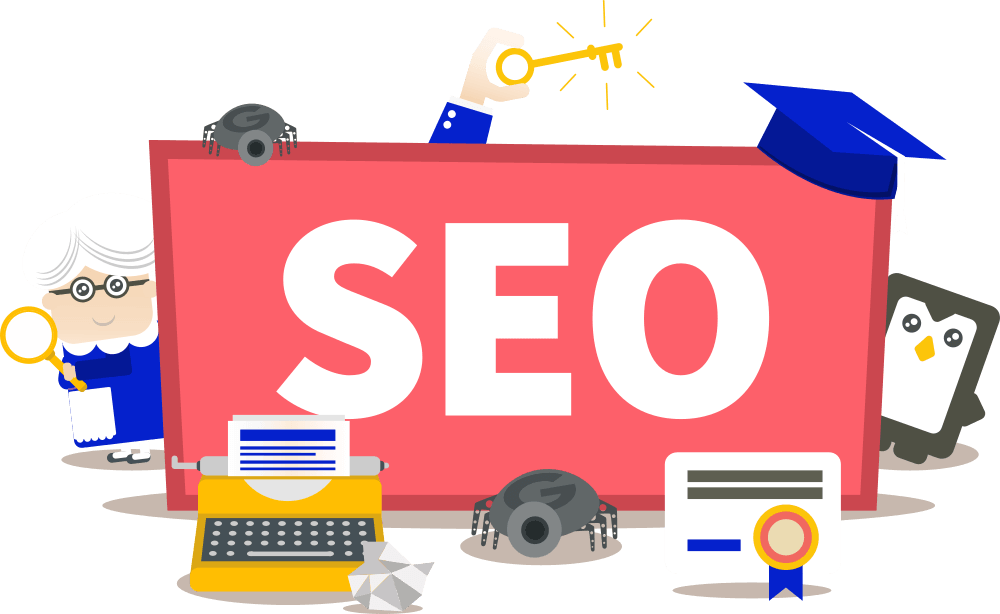Accessibility is SEO: How Inclusive Design Boosts Visibility and Engagement
In the ever-evolving world of digital marketing, businesses are constantly searching for ways to improve their online visibility and user engagement. Many forward-thinking brands are turning to the best seo services company in rawalpindi to help them bridge the gap between design, accessibility, and search engine performance. What they are discovering is that accessibility is no longer just a moral or legal requirement — it’s a crucial component of effective SEO. By creating inclusive websites that everyone can use, companies not only expand their audience but also strengthen their search rankings and overall online authority.
What Is Accessibility in Web Design?
Accessibility in web design refers to creating digital experiences that can be used by all people, regardless of physical, cognitive, or technological limitations. It’s about ensuring that websites are functional, readable, and navigable for users with visual impairments, hearing difficulties, motor challenges, or other disabilities.
However, accessibility isn’t limited to individuals with disabilities — it benefits everyone. For example, captions on videos help not only deaf users but also those browsing in noisy environments. Similarly, proper color contrast improves readability for users in bright sunlight as much as it does for those with low vision.
When web designers implement accessibility best practices, they create experiences that feel natural and effortless for all users — which aligns perfectly with what search engines want to reward: usability, clarity, and relevance.
The Connection Between Accessibility and SEO
At its core, SEO (Search Engine Optimization) is about making a website understandable to both users and search engines. Accessibility, in a similar way, makes a website understandable and usable to everyone. The overlap between these two goals is substantial.
Search engines, like Google, prioritize websites that deliver excellent user experiences. Factors such as page structure, navigation clarity, content hierarchy, and multimedia descriptions directly affect how a website ranks. Accessibility features — such as alt text for images, semantic HTML, clear headings, and properly labeled buttons — give search engines more context, making it easier for them to interpret and index a site’s content.
For example:
-
Alt Text describes images, helping visually impaired users who rely on screen readers — and giving Google valuable keyword context.
-
Proper HTML Structure (using
<h1>,<h2>, etc.) helps both assistive technologies and search crawlers understand content relationships. -
Video Captions and Transcripts improve accessibility while also providing indexable text for search engines.
The result? A website that’s easier to use, more inclusive, and more discoverable.
How Inclusive Design Improves Engagement
Accessibility-driven design directly impacts engagement metrics — which are crucial for SEO. When users can easily navigate a site, read its content, and interact without frustration, they stay longer, explore more pages, and are less likely to bounce away.
Some of the key engagement improvements from inclusive design include:
-
Lower Bounce Rates: Users who can access content quickly and comfortably are less likely to leave.
-
Higher Dwell Time: When content is easy to consume — through readable fonts, good contrast, or screen reader compatibility — users stay longer.
-
Improved Conversion Rates: Inclusive interfaces that accommodate all users increase trust and encourage action, whether it’s filling a form or making a purchase.
These improved behavioral signals are noticed by Google’s algorithms and indirectly contribute to higher rankings.
Core Web Vitals and Accessibility
Google’s Core Web Vitals — metrics that measure user experience factors like loading time, interactivity, and visual stability — align closely with accessibility goals.
For instance:
-
Largest Contentful Paint (LCP): Accessible design often uses clean code and optimized media, which improve load times.
-
First Input Delay (FID): Accessible navigation and responsive buttons enhance usability and reduce interaction delays.
-
Cumulative Layout Shift (CLS): Consistent layouts benefit everyone, especially users relying on assistive technology that depends on predictable structures.
By designing with accessibility in mind, developers naturally improve Core Web Vitals, thereby boosting both usability and SEO performance.
Key Accessibility Practices That Strengthen SEO
-
Use Semantic HTML Tags:
Tags like<header>,<main>,<article>, and<footer>help define content structure. Screen readers and search crawlers rely on these cues to understand page hierarchy. -
Optimize Alt Text for Images:
Alt attributes serve dual purposes — they describe visuals for users with screen readers and reinforce SEO relevance when crafted naturally. -
Ensure Color Contrast and Legible Typography:
Proper contrast and font choices improve readability and reduce fatigue, contributing to longer session durations. -
Make Navigation Keyboard-Friendly:
Users should be able to navigate a site without a mouse. Clear focus states and logical tab order help both accessibility and usability. -
Add Transcripts and Captions:
Video and audio content should include transcripts or captions. This makes content searchable and usable in all contexts. -
Use Descriptive Links and Buttons:
Instead of vague “Click here” links, use descriptive phrases like “Download our SEO guide.” It improves clarity for all users and adds keyword-rich context for search engines. -
Responsive Design for All Devices:
Accessibility and SEO both thrive when websites work seamlessly across devices. Responsive layouts ensure consistent user experiences on desktop, tablet, and mobile.
Legal and Ethical Dimensions
Beyond SEO benefits, accessibility is also a legal requirement in many countries. The Web Content Accessibility Guidelines (WCAG), maintained by the World Wide Web Consortium (W3C), outline standards for accessible design. Non-compliance can lead to lawsuits, but more importantly, it can alienate a large portion of users.
By embracing accessibility as a standard rather than an afterthought, companies demonstrate inclusivity and social responsibility — which can enhance brand reputation and trust.
AI and Accessibility: The Future of Inclusive SEO
Artificial Intelligence is rapidly transforming both SEO and accessibility. AI-powered tools can now analyze websites for accessibility gaps, generate alt text, and provide voice-based navigation. Similarly, search engines use machine learning to understand visual and contextual cues, rewarding sites that serve all audiences effectively.
Voice search, for instance, relies on natural language processing (NLP) and overlaps with accessibility features such as voice commands and text-to-speech compatibility. As AI continues to evolve, accessibility will become an even stronger signal of user-centered design and, therefore, SEO success.
Common Accessibility Mistakes That Hurt SEO
Despite good intentions, many websites unknowingly introduce accessibility barriers that also harm their search performance. Here are some common pitfalls:
-
Using images without alt text
-
Overusing JavaScript without fallbacks
-
Poor color contrast or tiny font sizes
-
Non-descriptive buttons or links
-
Auto-playing media that disrupts navigation
Fixing these not only improves accessibility compliance but also enhances crawlability and user satisfaction — two major SEO pillars.
Inclusive Design: A Competitive Advantage
Businesses that integrate accessibility into their SEO strategies early gain a competitive edge. They build websites that reach wider audiences, attract more organic traffic, and convert more users. Search engines increasingly reward these user-centric efforts with higher rankings and better visibility.
Moreover, inclusive design fosters brand loyalty. Users who feel valued and supported are more likely to return, recommend, and engage with the brand. Accessibility, therefore, becomes both a marketing differentiator and a growth driver.
The New SEO Mindset: People First
SEO has evolved from being about keywords and backlinks to focusing on human experience. Accessibility embodies this shift perfectly — it’s about putting users first.
Designing for accessibility doesn’t mean compromising aesthetics; it means creating digital spaces where everyone feels welcome. When inclusivity drives design decisions, search performance naturally follows. Accessibility, usability, and SEO are now interdependent components of a successful digital strategy.
Conclusion
Accessibility is not an optional enhancement; it’s the foundation of a successful, user-friendly, and search-optimized website. By adopting accessible design principles, businesses improve user experience, meet compliance standards, and enhance their visibility on search engines.
In the end, accessibility is more than good SEO — it’s good ethics, good design, and good business. The brands that understand this connection will not only rank higher but also create meaningful, lasting relationships with every visitor who lands on their site.



